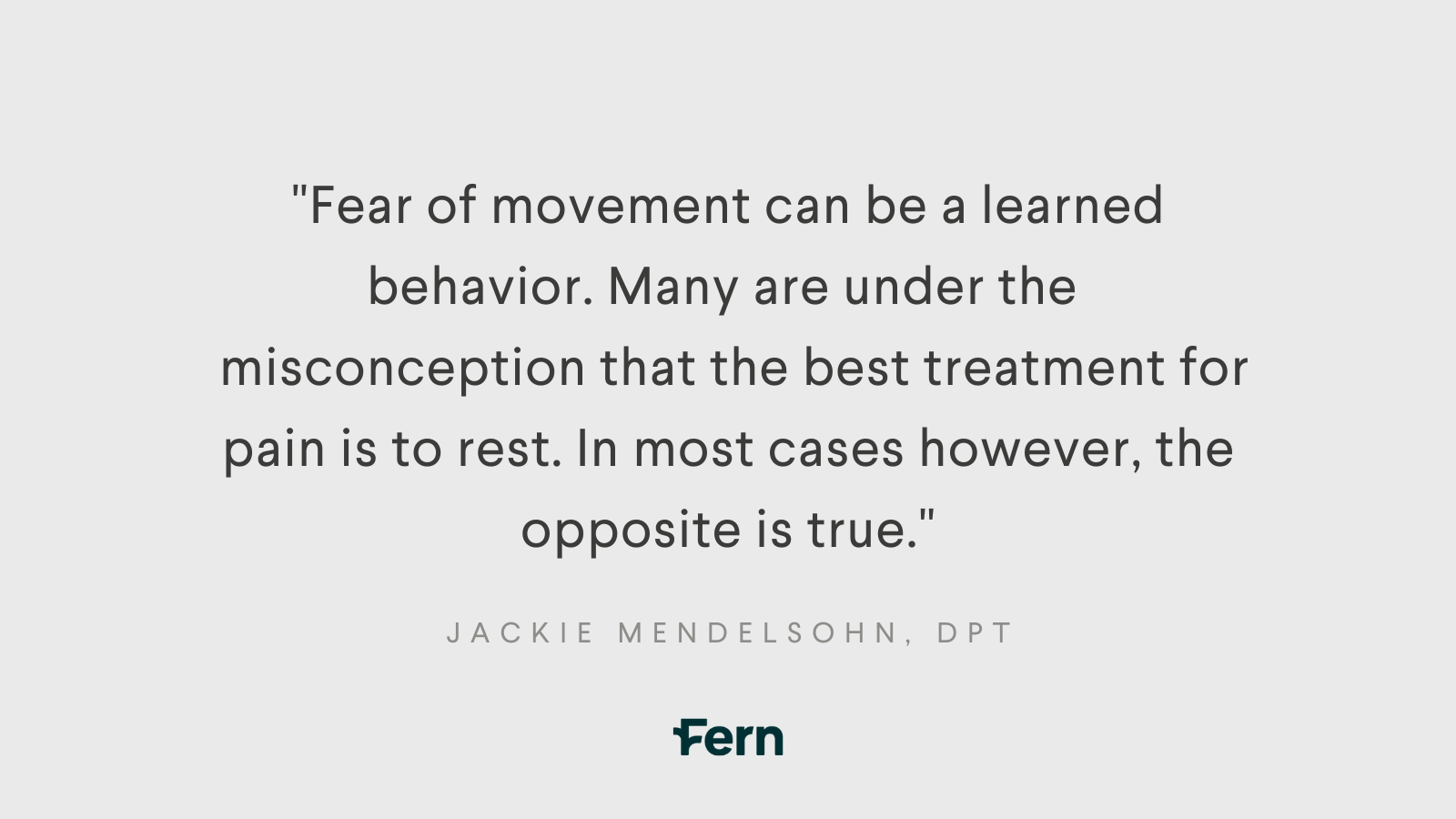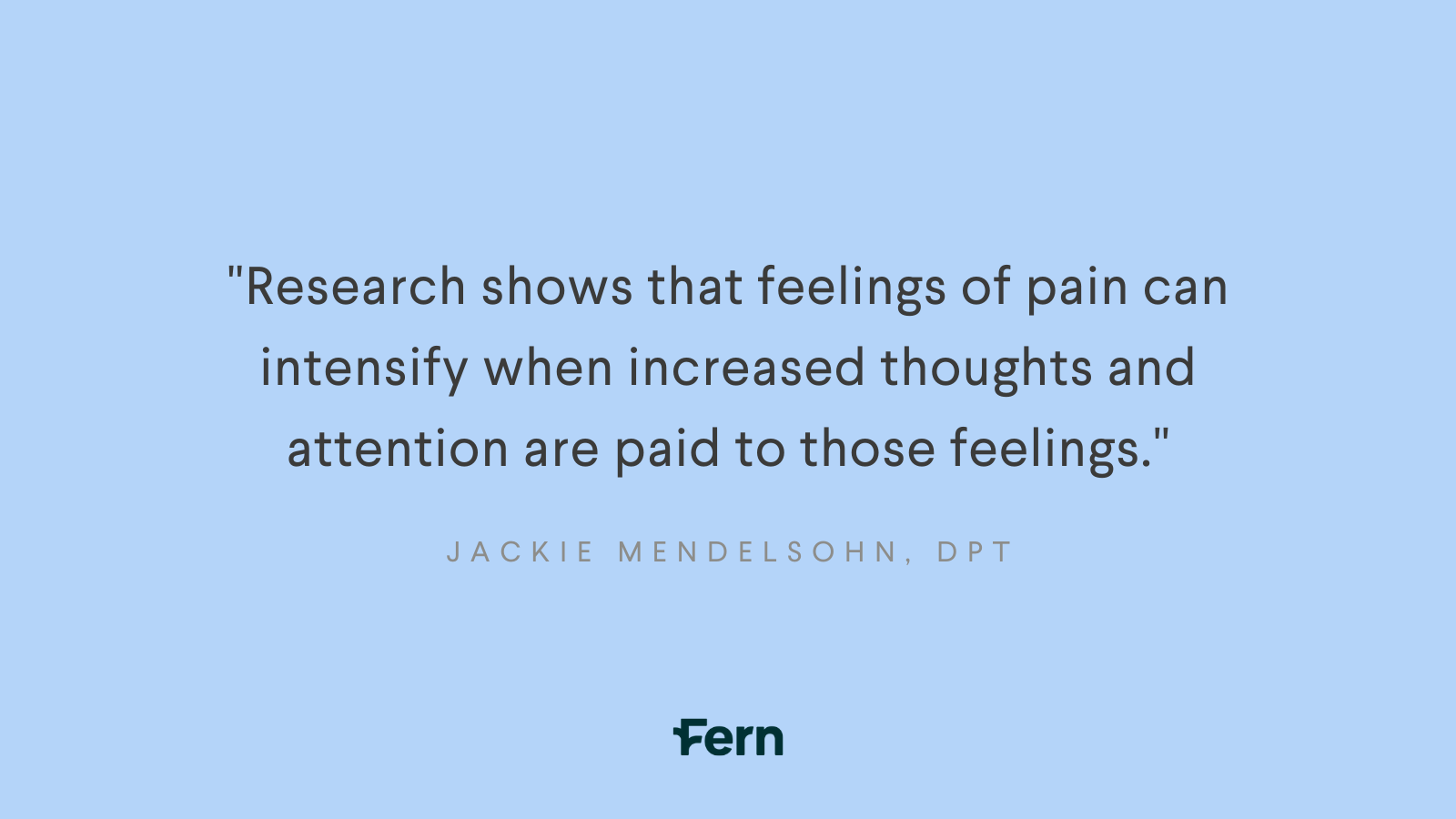As a physical therapist, I know that what happens outside of the clinic makes a significant impact on how well people with chronic musculoskeletal pain recover.
It’s important that people complete their exercises, of course. But beyond that, factors like how well they sleep, how much they move around during the day, and how stressed they feel can make a significant impact, too.
From the employer perspective, you know that your musculoskeletal pain costs are high. For manufacturers, repetitive motions like lifting and twisting can be a factor. For office workers, prolonged sitting at work is correlated with high levels of pain.
But every pain experience is unique. Lifestyle factors outside the workplace come into play, and it’s critical to identify and address these individual barriers to recovery as part of a comprehensive musculoskeletal pain program.
One of the reasons I joined Fern Health as a Clinical Specialist, DPT, and a certified health coach is recognizing how important it is to offer an all-encompassing program that includes support, motivation, and accountability to people in pain.
Below, I’ve outlined some of the factors that are essential when approaching the treatment of chronic musculoskeletal pain, and why it’s important to find a corporate musculoskeletal program that addresses each.
Fear of movement is a significant barrier to starting an exercise program
Exercise therapy helps to relax tense muscles, increase flexibility and mobility, and build strength. Cardiovascular exercise also releases endorphins in the body that boost mood and reduce pain.
Before people in pain can start reaping the benefits of exercise, however, they often have to overcome kinesiophobia – the fear of movement. Up to 70% of people with persistent pain experience kinesiophobia.
These fears can be based on a prior traumatic event. For example, someone might say, “the last time I did yoga, my back hurt for a week.”
Fear of movement can also be a learned behavior. Many are under the common misconception that the best treatment for pain is to rest. In most cases however, the opposite is true and excessive rest can actually exacerbate symptoms.
Within the Fern program, we use Pain Neuroscience Education (PNE) to educate members on why they hurt, and in turn assist in overcoming their fear of movement. Research shows that PNE successfully reduces fear of movement, paving the way for people with persistent pain to feel more comfortable with beginning restorative exercise therapy.
Health coaching, a pillar of the Fern program, can also help people in pain understand the difference between normal sensations like soreness from exercise, versus pain signals from injury.

Lack of quality sleep makes it harder for muscles to heal
Research has proven a connection between non-optimal sleep patterns and chronic pain. Up to 88% of people with chronic pain report issues related to sleep, and at least 50% of people diagnosed with insomnia have also reported chronic pain.
Research also shows that chronic pain impacts both the quantity and the quality of sleep. One person may have trouble falling asleep at night because of pain, while for others, symptoms can flare in the middle of the night and wake them up.
But while pain is known to impact sleep, research also suggests that the reverse – sleep’s impact on chronic pain – may be even more important. Studies show that in the long term, it is the quality of sleep that may play a strong role in improving persistent pain symptoms.
Understanding how well someone with chronic pain sleeps is important when creating a personalized recovery plan for that person. Those who have trouble falling asleep or staying sleeping through the night may benefit from resources on healthy sleep habits, for example.
Mental health and chronic musculoskeletal pain are connected
For people with chronic pain, psychological factors like depression, anxiety, and stress can all play a significant role in how they feel day to day.
Chronic pain and mental health are closely connected. Chronic pain can lead to depression, and vice versa – depression can play a role in the development of chronic pain. Sixty-five percent of people with depression also report chronic musculoskeletal pain, and people with chronic back pain are three times more likely to experience a depressive episode.
Depression can make pain recovery significantly more difficult. Research shows that chronic pain and depression lead to physiological changes in the brain that impact both pain levels and mood. Depression is also proven to cause fatigue, making it more difficult for individuals to feel energetic enough to start something new.
People with chronic pain and anxiety may also be more likely to experience pain catastrophizing. In pain catastrophizing, fear occupies all thoughts and magnifies worries that pain symptoms will never improve. Research shows that feelings of pain can intensify when increased thoughts and attention are paid to those feelings.
At Fern Health, we know that people in pain experiencing depression symptoms may require a different approach from those with other challenges. For example, those with symptoms of depression may need additional resources on understanding the connection between depression and pain. Knowing about the psychological challenges that can interfere with a member’s program enables us to accommodate our recommendations for better results.

The link between lack of activity and chronic pain
While kinesiophobia can be one reason someone in pain doesn’t exercise, a sedentary lifestyle can be to blame as well. The COVID-19 pandemic, for example, has reduced daily movement for remote workers to short walks between the bedroom, the living room, and the kitchen within one’s own home.
Movement is vital throughout each day when targeting pain relief. For example, if an individual with chronic pain solely completes some restorative exercises a few times each week, he or she may not experience as much pain relief as someone who adds a daily walk to their weekly plan.
The good news? Exercise and movement do not have to be isolated to one specific type of activity. Research shows for example, that increasing your step count to a total of 7,000-8,000 steps per day can reduce pain intensity.
Taking care of the individual as a whole person
Pain is complicated, and every pain experience is unique to the person experiencing it. The Fern program uses tools described above such as health coaching and pain neuroscience education to meet people with chronic pain where they are in their journey, and help each individual overcome fear around pain and movement.
Getting started is often the most difficult part, but with the right targeted support, people with chronic pain can overcome barriers and begin the pain recovery process.
Ready to address the underlying source of musculoskeletal pain in the workplace, not just the symptoms? Get in touch with us for a pain-free demo.






